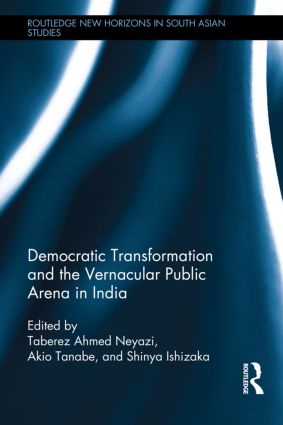
Title
Princely India Re-imagined A Historical Anthropology of Mysore from 1799 to the present
Size
216 pages, hardcover
Language
English
Released
August 22, 2012
ISBN
9780415554497
Published by
Routledge
Book Info
See Book Availability at Library
Japanese Page
Indian princely states covered nearly half of the Indian subcontinent at the time of India’s independence, and collapsed after the departure of the British. Focusing on one of the largest and most important of these princely states, Mysore, Princely India Re-imagined offers a novel interpretation and thorough investigation of the relationship between the king and his subjects in South Asia. The book provides an anthropological analysis of the princely state of Mysore in colonial times along with its post-colonial legacies.
There were more than 500 princely states in India under the British rule, including present-day Pakistan and Bangladesh, with native Indian “rulers” as their sovereigns. They occupied nearly 45 percent of the area and governed 35 percent of India’s population before the partition in 1947. To date, we can see many former native rulers or their descendants playing important roles in public life. Despite this, it has been argued that the resulting locus of kingship became entirely meaningless and hollow after the advent of the British rule. Princely India Re-imagined has challenged this shared view of historians and anthropologists.
The book argues that the denial of political and economic power to the king, especially after 1831 when direct British control was imposed over the state administration in Mysore, was paralleled by a counter-balancing multiplication of kingly rituals, rites, and social duties. The book looks at how, when kingly authority lacked income and powers of patronage, the local sources of power and social roots were being reinforced and rebuilt in various ways.
In the book, the author argues how modern education was introduced to create modern Indian aristocracy, fit for reign under British rule, and how the strategies and significance of the newly created pan-Indian marriage network became possible for the first time, thanks to the network of British officers. The author also discusses the spatially reconfigured and reconstituted social stratification of the royal city of Mysore through modern city planning, and the dynamism and multifaceted nature of the most important state ritual: the Dasara.
Using a combination of historical and anthropological methodologies along with substantial archival work and field research including in-depth interviews with members of the royal caste Urs, the book argues that the idea of kingship lives on in South India and continues to play a vital role in contemporary South Indian social and political life.
(Written by IKEGAME Aya, Associate Professor, Institute for Advanced Studies on Asia / 2018)
Table of Contents
2 The palace
3 The politics of honour
4 Educating the maharajas
5 From clansmen to gentlemen
6 Marriage alliances in imperial space: the 'cosmopolitan' aristocracy
7 The capital of Rajadharma: modern space and religion
8 Dasara, durbar, and dolls: the multi-dimensionality of public ritual
9 The king is dead, long live the king!
Related Info
Review by Barbara N. Ramusack, The Journal of Asian Studies, Volume 73, Issue 04, November 2014, pp. 1151-1152
http://journals.cambridge.org/abstract_S0021911814001430
Review by Robin Jeffrey, Pacific Affairs, Volume 86, Issue 4,
https://www.jstor.org/stable/43590801
Review by Malinda Banerjee, H-Soz-u-Kult, 15 January 2013
https://www.hsozkult.de/publicationreview/id/rezbuecher-14692
Review by Anthony Good, The South Asianist, Volume. 2, Issue 2, 2013
http://www.southasianist.ed.ac.uk/issue/view/11



 Find a book
Find a book


 eBook
eBook


